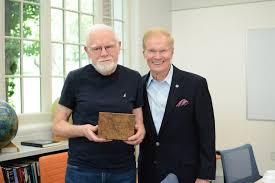
NASA is exploring innovative, sustainable ways to construct future habitats on the Moon. One of the most groundbreaking ideas under consideration involves using fungus to create structures. This approach, though unconventional, promises a potential solution for building habitats that are self-sustaining, durable, and environmentally friendly. Let’s dive into NASA’s fungus-filled plan to grow houses on the Moon.
The Challenge of Lunar Habitats
Building habitats on the Moon is a monumental challenge due to its harsh environment. The lack of atmosphere, extreme temperatures, and high levels of radiation make construction difficult. Traditional building materials like concrete or metal would require extensive resources, many of which would need to be transported from Earth, leading to high costs and logistical complications.To solve this problem, NASA has been researching alternative methods that utilize resources readily available in space. One of the most fascinating concepts is using biological materials like fungi to “grow” habitats on the Moon.
Myco-Architecture: The Role of Fungi in Space Construction
NASA’s solution involves myco-architecture, a process of using mycelium, the root-like structure of fungi, to grow construction materials. Mycelium is lightweight, easy to grow, and has excellent insulation properties. It can also self-replicate and repair itself, making it an ideal material for constructing habitats in space where maintenance resources are limited.The idea is to cultivate fungal structures in a controlled environment, where they can naturally grow into the desired shapes and sizes. These mycelium-based habitats could then be treated to become sturdy and durable, capable of withstanding the extreme lunar environment.
The Science Behind Fungal Growth
Mycelium is a fibrous network of cells that form the foundation of fungi. It grows by breaking down and digesting organic material, forming a complex and dense structure over time. When dried and hardened, mycelium becomes an incredibly strong and lightweight material. NASA plans to use this process to create building blocks that can form the walls and ceilings of lunar habitats.Once the fungi are transported to the Moon, they can be fed with organic material either brought from Earth or harvested on the Moon, such as algae or other biomaterials. As the fungi grow, they would mold into a structure similar to a concrete dome but with a fraction of the weight.Benefits of Mycelium for Space Habitats
Sustainability:
Mycelium is a renewable and biodegradable material, making it environmentally friendly. Growing habitats with mycelium would reduce the need for heavy construction materials, which are expensive and impractical to transport to space.
Strength and Insulation:
Mycelium, when processed, becomes incredibly strong and resistant to damage. It also has excellent insulation properties, which is crucial in the Moon’s extreme temperature conditions, where daytime temperatures can reach up to 127°C (260°F) and plunge to -173°C (-280°F) at night.
Self-repair and Growth:
One of the key advantages of using fungi is their ability to self-repair. If a part of the habitat is damaged, the mycelium could be prompted to regrow and fix any cracks or holes.
Challenges and Considerations
While the idea of growing habitats on the Moon using fungi is exciting, it also presents challenges. One of the primary concerns is the ability to control fungal growth. Fungi are living organisms, and their growth patterns are unpredictable. NASA will need to develop advanced methods to control the rate and direction of fungal expansion to ensure the habitats grow in the desired shape.Additionally, fungi rely on organic materials for growth. NASA will have to solve the problem of efficiently sourcing and delivering these materials on the Moon. Lastly, ensuring the durability of mycelium-based structures in the vacuum of space, with exposure to cosmic radiation and micrometeoroid impacts, will require extensive research and testing.
Future Prospects for Mycelium Habitats
NASA’s mycelium project is still in its experimental phase, but early results show promise. In collaboration with other research institutions and companies, NASA is exploring ways to scale up this technology for space missions. If successful, these mushroom-based houses could be a game-changer not only for lunar exploration but for future missions to Mars and beyond.The potential for this technology extends beyond space. On Earth, mycelium-based construction could revolutionize sustainable architecture, reducing the need for environmentally damaging materials like concrete and steel.
NASA’s plan to grow mushroom houses on the Moon is a bold and visionary approach to one of the greatest challenges of space exploration. By leveraging the unique properties of fungi, the space agency aims to create sustainable, lightweight, and self-repairing habitats that can withstand the rigors of the lunar environment. While there are significant technical challenges to overcome, mycelium-based construction offers a glimpse into a future where biology and space technology intersect to push the boundaries of human habitation in space.
Subscribe to Follow Global Trends for daily global news.
Find Out How To Make Money As A Full Time Writer/Blogger Guide.
To Advertise, Advertise Your Affiliate Links on FollowGlobalTrends.com for Just $1 Per Link Per Month!
Related Articles
Sustainable building materials
Written By: Enyoghasi Ngozi pricillia
,

